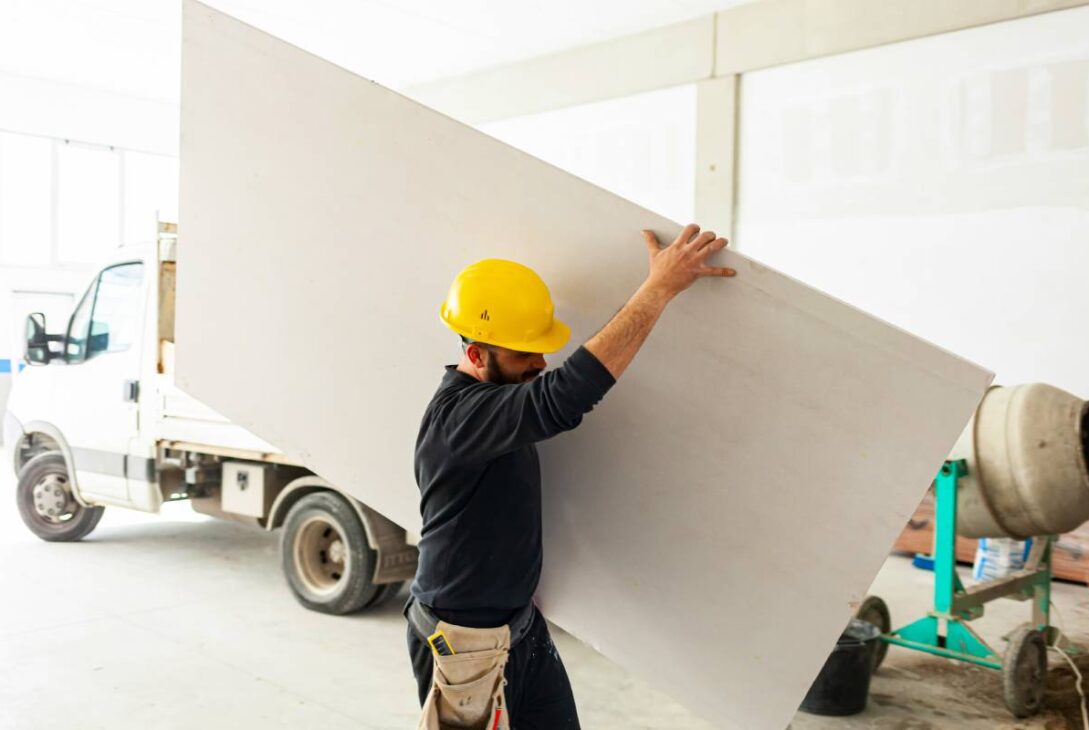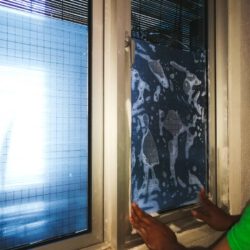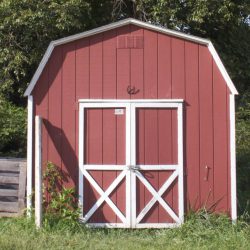You encounter it daily, passing miles of it without a second thought. Whether at home, in the office, or in stores, it goes by various names like Sheetrock, wallboard, plasterboard, or gypsum wallboard, but most commonly known as drywall. Despite its ubiquitous presence, few understand its origins, manufacturing process, or its versatility.
Drywall serves as a fundamental construction material for walls and ceilings, and it’s also employed in creating architectural features like eaves and arches. Its appeal lies in its quick installation, durability, and ease of repair when damaged.
This article aims to demystify drywall by exploring its composition, manufacturing process, and lifespan. Let’s delve into what drywall is, its components, and how long it typically lasts.
What is a drywall made of?
Drywall, an essential component in modern construction, is composed of several layers carefully crafted to provide strength, durability, and fire resistance. At its core lies gypsum plaster, a mineral renowned for its versatility and abundance. Gypsum, a soft sulfate mineral composed of calcium sulfate dihydrate (CaSO4·2H2O), forms the foundation of drywall’s structural integrity.
The manufacturing process begins with the extraction of gypsum from mines or quarries, where it is crushed into a fine powder. This gypsum powder serves as the primary ingredient, mixed with additives to enhance its properties. These additives may include starches, foaming agents, and other chemicals aimed at improving fire resistance, soundproofing, and mould resistance.
Once mixed, the gypsum slurry is poured onto a layer of heavy paper, typically made from recycled materials. This paper acts as a facing material, providing rigidity and support to the gypsum core. Another layer of paper is then applied on top of the gypsum slurry before the entire assembly passes through a series of rollers to ensure uniform thickness and proper adhesion.
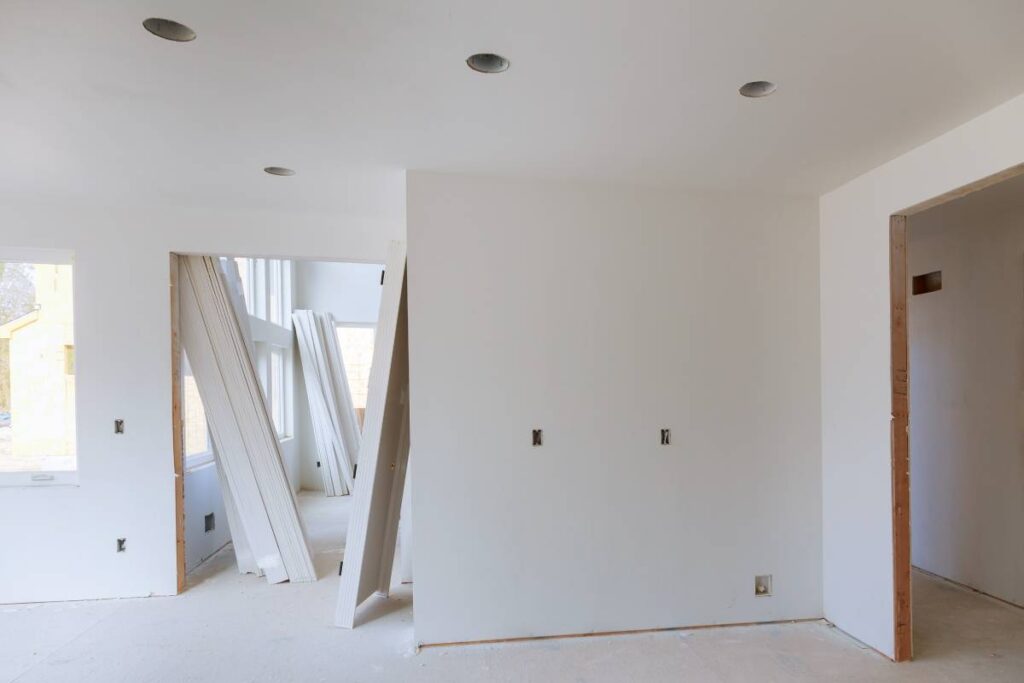
After the initial formation, the panels are cut to size and dried in a kiln to remove excess moisture, resulting in sturdy and lightweight boards ready for installation. The drying process is crucial for preventing warping and ensuring dimensional stability.
Drywall panels come in various thicknesses and sizes to accommodate different construction needs, from standard residential walls to specialized fire-rated assemblies. Additionally, specialized types of drywall, such as moisture-resistant or impact-resistant variants, may incorporate additional layers or different additives to suit specific environmental or structural requirements.
In summary, drywall is a composite material consisting of gypsum plaster sandwiched between layers of paper. Its composition and manufacturing process are carefully designed to produce versatile, cost-effective, and durable building materials widely used in modern construction projects.
What are the advantages and disadvantages of drywall?
Drywall offers several advantages that have made it a popular choice in construction:
Advantages:
- Affordability: Drywall is cost-effective compared to traditional plaster walls, making it a budget-friendly option for construction projects.
- Ease of installation: Drywall is relatively easy to install, requiring fewer labour hours compared to plaster walls. This contributes to shorter construction timelines and lower labour costs.
- Versatility: Drywall can be used for a variety of applications, including interior walls, ceilings, and partitions. It can also be easily painted or decorated to match different design aesthetics.
- Fire resistance: Gypsum, the primary component of drywall, is naturally fire-resistant, providing a level of passive fire protection to buildings.
- Sound insulation: Drywall helps to reduce sound transmission between rooms, providing a level of acoustic insulation.
- Smooth surface finish: Drywall creates a smooth and uniform surface, making it suitable for painting, wallpapering, or applying decorative finishes.
Despite its many advantages, drywall also has some disadvantages:
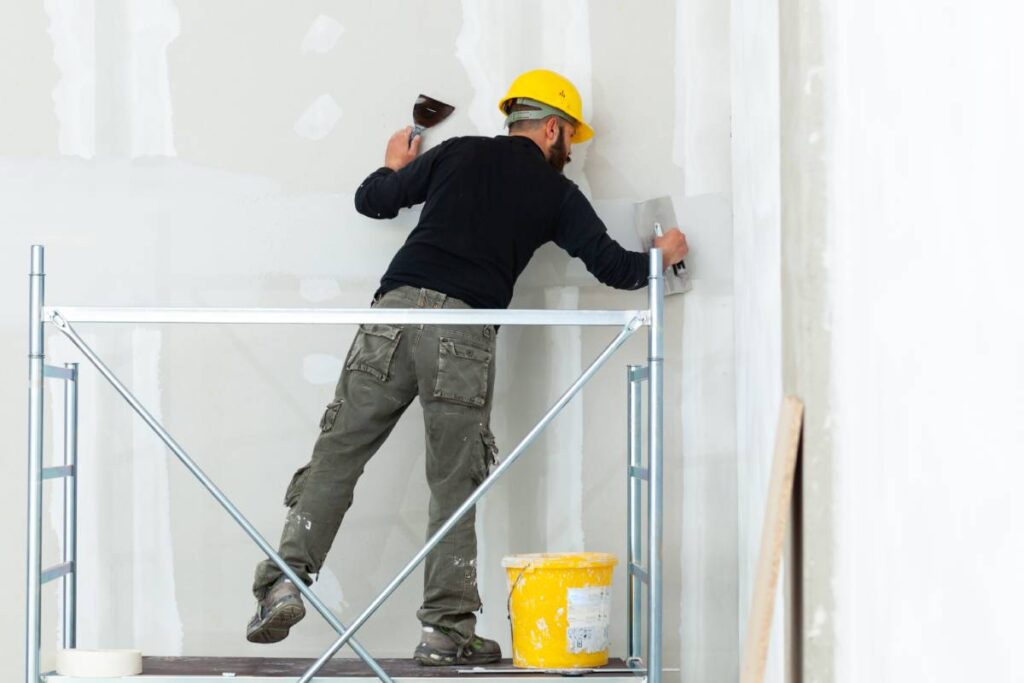
Disadvantages:
- Susceptibility to damage: Drywall is prone to damage from impacts, moisture, and mold growth, which can necessitate repairs or replacements.
- Limited durability: While drywall is relatively durable, it is not as resistant to dents, scratches, or punctures as other wall materials like plaster or concrete.
- Moisture sensitivity: Standard drywall is not moisture-resistant and can be damaged by water leaks or high humidity levels. Specialized moisture-resistant drywall is available but at an additional cost.
- Environmental impact: The production of drywall significantly affects the environment. Processing gypsum releases particles from the gypsum powder and emits sulfur dioxide, nitrous oxide, and carbon monoxide. Moreover, heating the gypsum consumes a large amount of energy.
- Limited load-bearing capacity: Drywall is not designed to support heavy loads, so additional structural support may be required for mounting heavy objects like shelves or cabinets.
- Professional installation recommended: While drywall installation can be DIY-friendly, achieving a smooth finish and proper joint treatment often requires professional expertise.
Despite these disadvantages, drywall remains a popular choice for its affordability, versatility, and ease of installation in many construction projects.
How long does drywall last?
Drywall, commonly used in homes, boasts a lifespan of up to 70 years under optimal conditions. However, factors like water damage, termite activity, or heavy wear can significantly shorten its longevity. Fortunately, because drywall can be replaced in sections, a complete overhaul is rarely necessary.
Let’s see the various aspects of drywall in your home and how you can extend its lifespan.
Factors affecting drywall’s longevity:
Exposure to moisture
While drywall can withstand normal moisture levels and can be cleaned with a damp cloth, excessive water exposure can lead to swelling, bulging, or peeling. Roof leaks, plumbing issues, or high humidity levels can cause such damage. In moisture-prone areas, using greenboard drywall is advisable to mitigate these risks.
Termite damage
Termites, attracted to the paper content in drywall, can cause noticeable damage, such as pinholes in walls or evidence of waste. Addressing termite infestations promptly is crucial to prevent structural damage. Treatment may involve removing sections of drywall for assessment, but full replacement is seldom necessary.
Wear and tear
Despite its durability, drywall is susceptible to dents, scuffs, and holes, especially in high-traffic areas. While minor damage can be patched, accumulated repairs may become unsightly over time. In such cases, replacing damaged sections may be preferable for a smoother appearance. Skilled installers can swiftly replace sections, minimizing downtime.
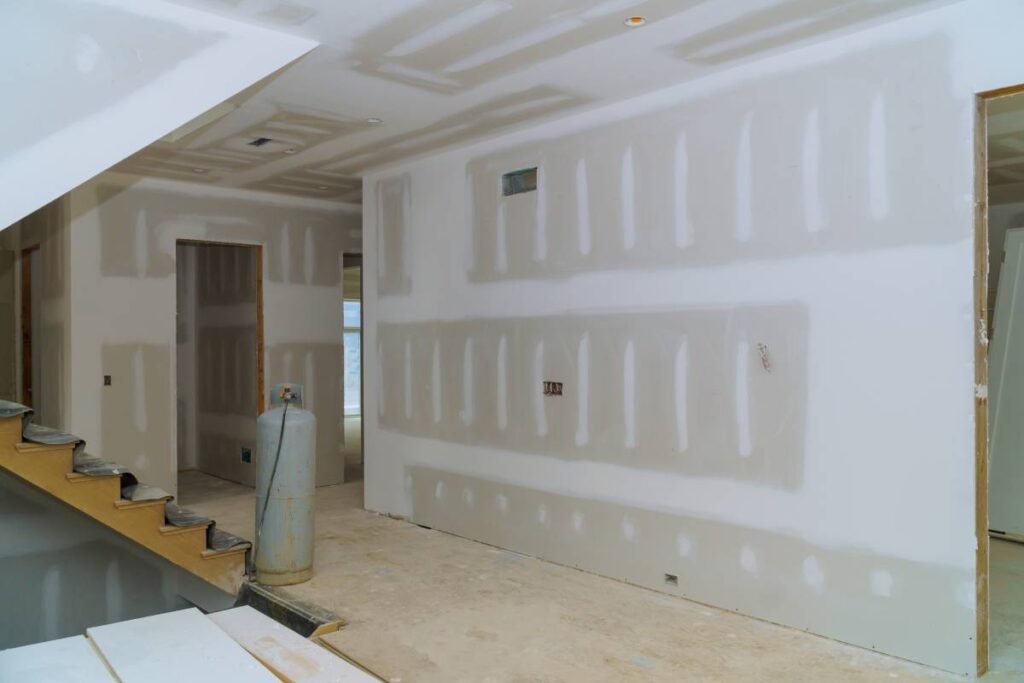
How to extend the lifespan of your drywall
Concerned about your drywall’s durability? There are simple steps you can take to maximize its longevity and ensure you get the most out of your investment.
Consider mould-resistant drywall to minimize water damage
Opting for mould-resistant drywall, although slightly more expensive, can be beneficial in moisture-prone areas like bathrooms. This specialized drywall variant, resembling traditional drywall in appearance, offers enhanced resistance to water, reducing the risk of moisture buildup and subsequent mould growth. While not foolproof against water damage, its thicker construction helps deter water infiltration, providing added protection.
Promptly repair damaged areas of your drywall
Although drywall is resilient, neglecting to repair damage promptly can weaken its integrity over time. Addressing damages as they arise prevents gradual deterioration. For instance, while drywall inherently possesses fire resistance due to its composition, prolonged exposure to fire can weaken it, leaving visible signs of burning that compromise its structural integrity. By promptly addressing such issues, you can maintain the drywall’s durability and resilience, ensuring it remains resistant to moisture and other potential hazards for longer periods.
Inspect your drywall regularly
While your drywall might seem fine now, its condition can change over time. As part of your home maintenance routine, regularly check your drywall to ensure it’s functioning properly.
Pay attention to any cracks or wrinkles, particularly along baseboards, edges, corners, and ceilings, as these could signal underlying issues like foundation problems. Additionally, be on the lookout for watermarks, stains, or discolouration, as these may indicate early signs of moisture buildup or mould growth.
By staying vigilant with your drywall inspections, you can catch potential issues early on and address them before they escalate.
In Conclusion
Drywall is a versatile and durable building material widely used in homes. While it offers many benefits such as easy installation and affordability, factors like moisture, termites, and regular wear and tear can affect its longevity.
To prolong the lifespan of your drywall, conduct regular inspections for any changes or irregularities, and promptly address any damages that arise. Keeping your drywall clean and well-maintained will help ensure it remains in top condition for years to come.


